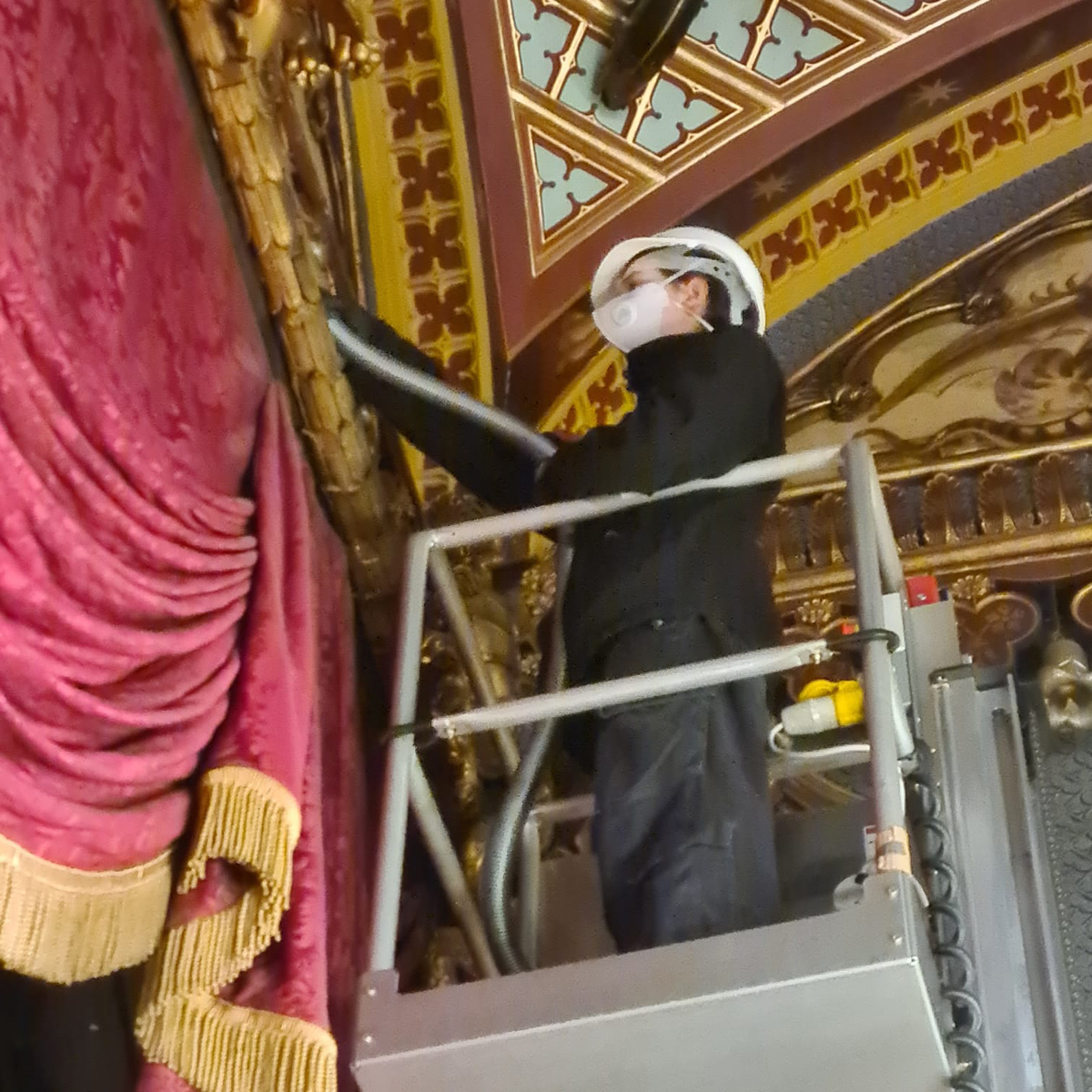An Enchanting Diamond Blaze: Up close to the Dragon Chandelier in the Banqueting Room
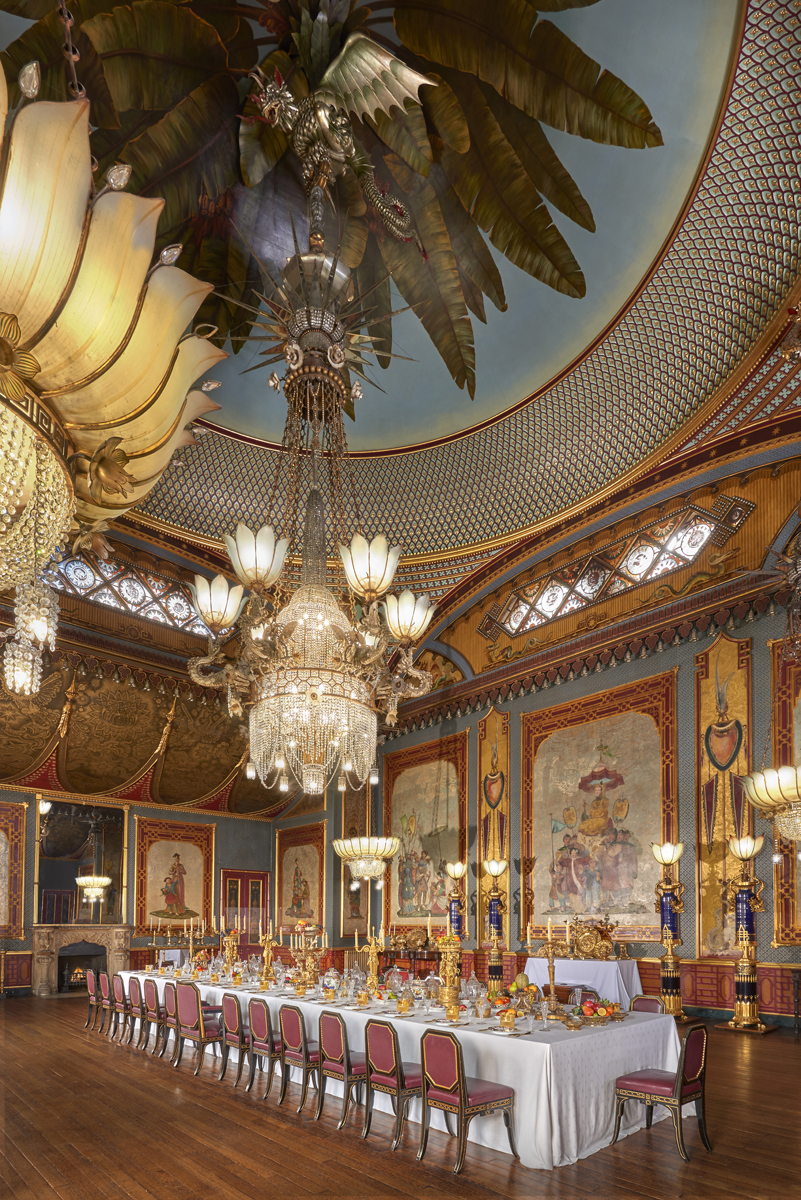
When entering the Banqueting Room of the Royal Pavilion, visitors see a shimmering, sparkling and heavily ornamented interior.
The most auspicious object in the room, and arguably in the entire building is the large central crystal chandelier. Its size is astonishing, measuring nine meters in length (the height of a two-story house), and it weighs a worrying ton.
The chandelier is the focal point of the room’s decorative scheme. Your eyes are drawn to it because of its sheer size and fantastical design, and then to the top where you can make out a dragon that appears to be flapping about under an illusionist ceiling painting showing an exotic plantain tree and an open sky. Astonishingly, the dragon seems to be holding the heavy chandelier in its claws.
I have recently been looking into the history of some of the chandeliers and lanterns on the Royal Pavilion estate, so was only too delighted to have had an opportunity this week to get closer to this largest of objects in the Pavilion than ever before.
Our Conservation team are currently cleaning the Banqueting Room curtains and have erected a tower scaffold for that purpose. They kindly gave me the opportunity to scale the tower in order to take some new close-up pictures of the chandelier and other high-level ornaments.
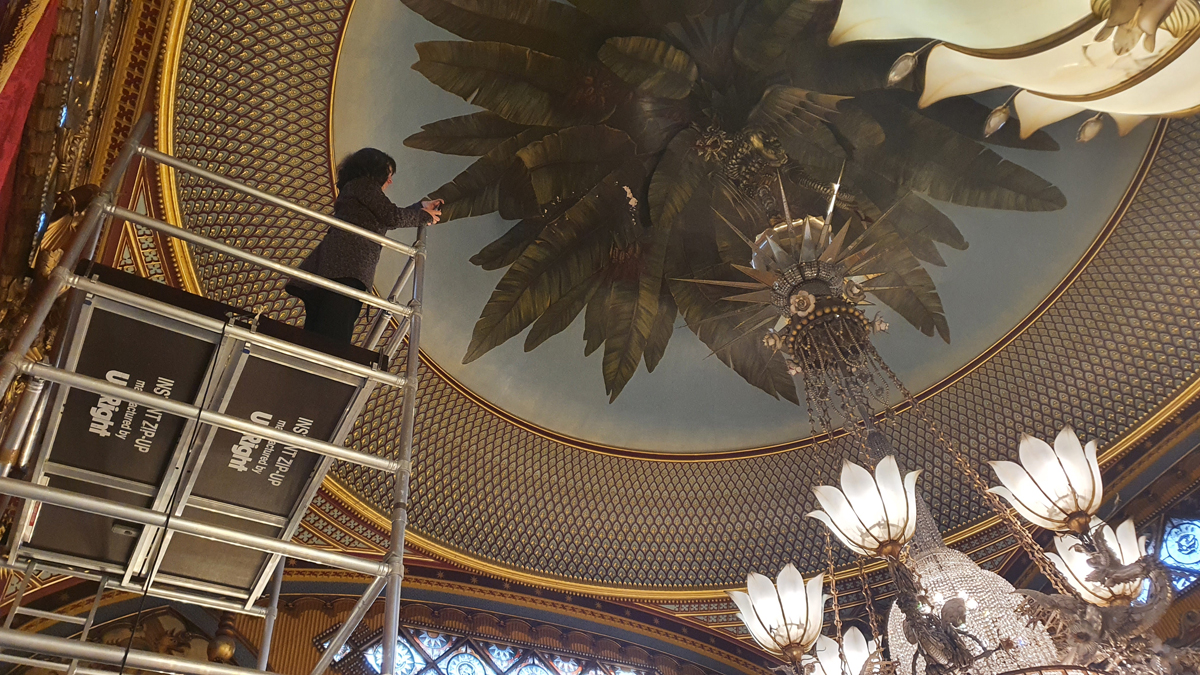
The so-called Dragon Chandelier was designed by the interior decorator Robert Jones in or just after 1817 and made by William Perry of New Bond Street in London. Perry also supplied the four smaller chandeliers in the Banqueting Room (held by phoenix birds), and the nine ‘inverted parasol’ chandeliers in the Music Room.
The central dragon was carved from various types of wood, then silvered and eventually glazed with layers of translucent paint. It was supplied by Bailey & Saunders, who charged £380, and a further £56.18s for ‘silvering it at Brighton’. In July 1818 William Perry fixed a ceiling hook “passing into the dragon” to support a chandelier, but some sort of light probably hung there before that date.
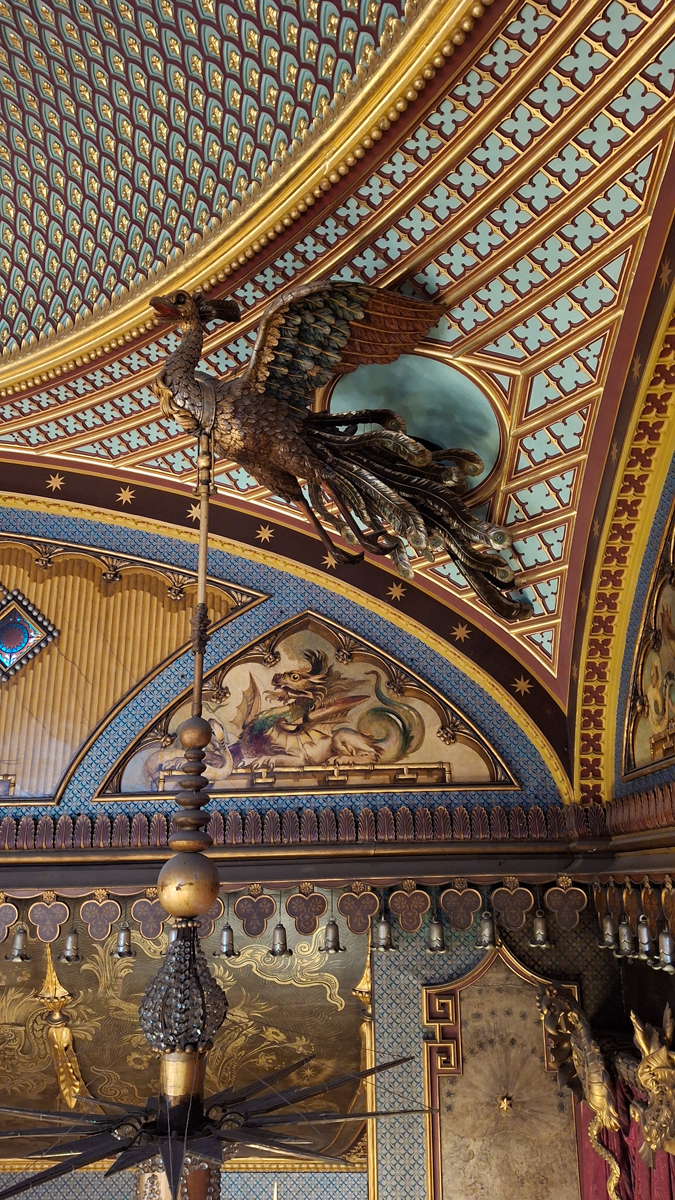
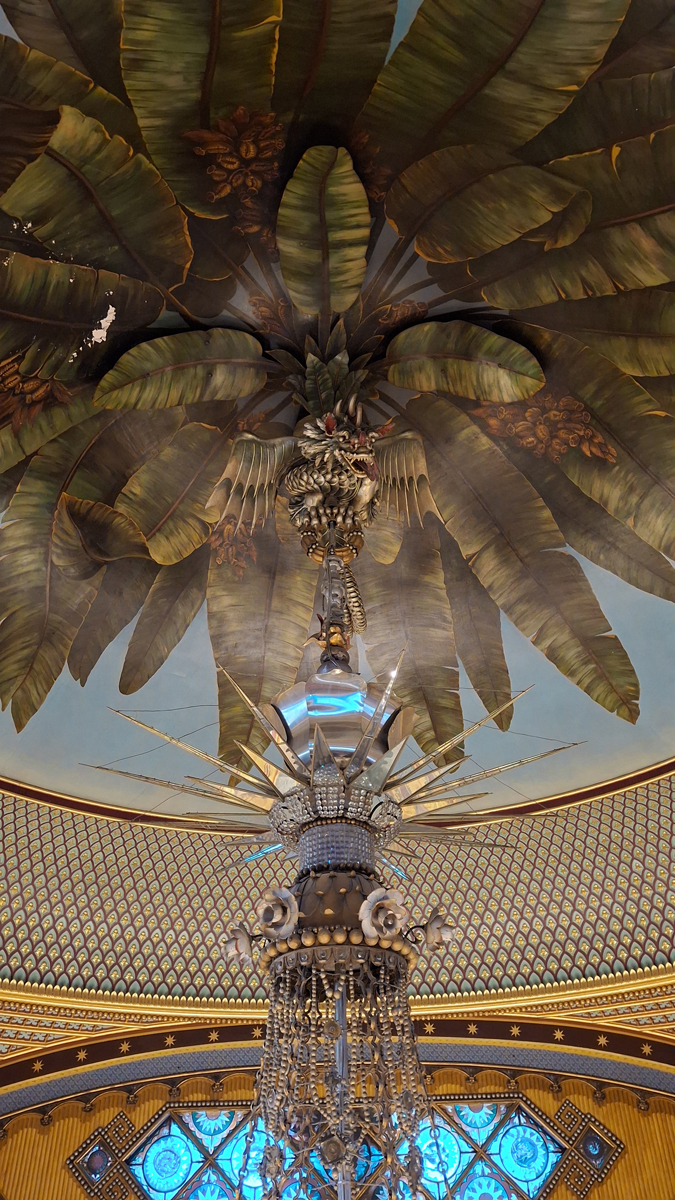
In the Royal Pavilion inventory from 1828 it is described as
It is frequently described in superlative terms in early guidebooks. In 1823 the local historian Richard Sickelmore describes it in these gushing terms: “The lilies, when illuminated, dart their copious and vivid rays through the multiplied and sparkling tints, and influence connected objects to the semblance of rubies, pearls, glittering brilliants, and shining gold – creating, if the figure may be allowed, in mid-air, a diamond blaze. Its effect is magical: it enchants the senses, and excites, as it were, a feeling of spell-bound admiration in all within its radiance and circle.”
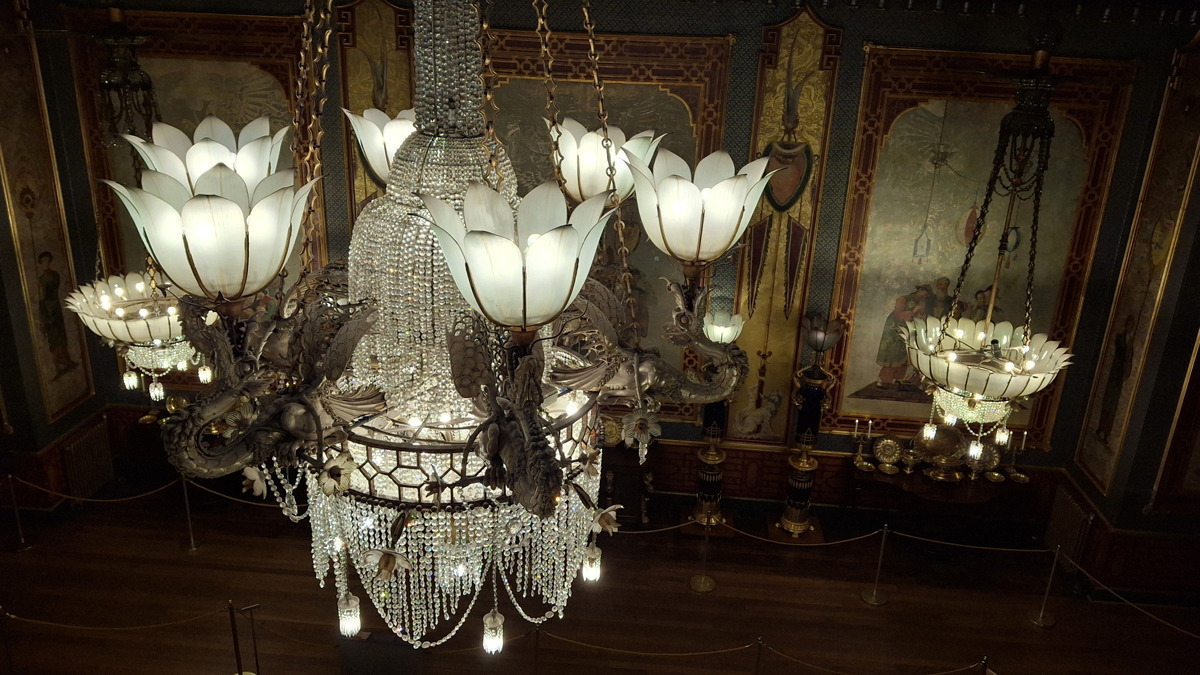
The dragon looks suspiciously European rather than Chinese, which indicates that its creator was certainly more familiar with European mythology than Chinese culture. It is of course, not bearing the weight of the chandelier, but hides a strong cast iron construction which is suspending it from architect John Nash’s tent-shaped roof structure.
Because of the unusual shape of the roof, it is very likely that Nash, Jones and the Prince Regent discussed the design of this enormous object. Sadly, no correspondence between them survives.
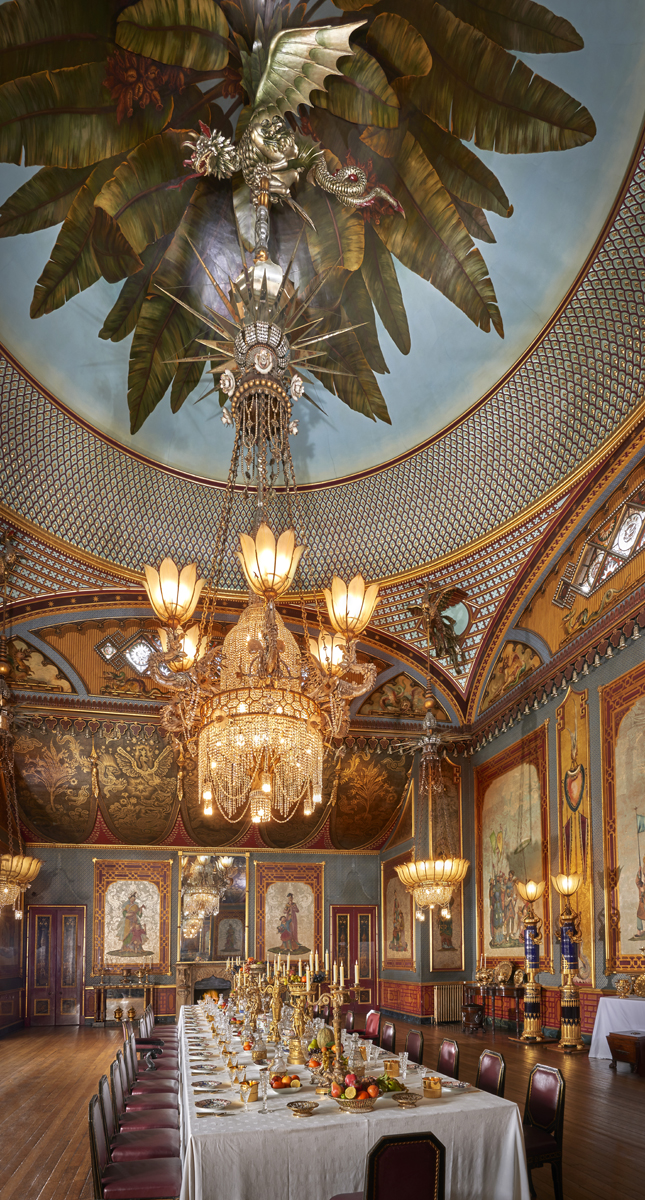
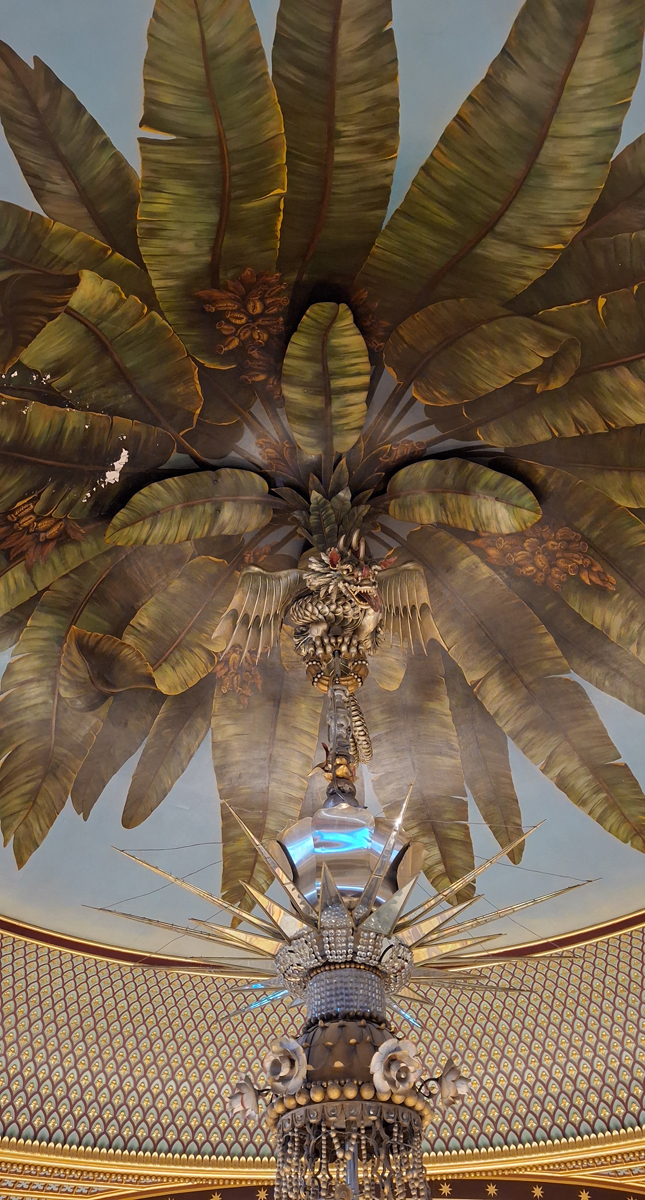
The chandelier’s visual effect is stunning, and one can imagine that after several hours of excessive eating and drinking, guests would have felt dizzy and disoriented when they looked up at the ceiling, especially when inebriated.
There are indeed several diary entries and letters dating from the 1820s in which guests expressed their concern about the dragon letting go of the chandelier. It seems that Queen Adelaide (wife of George IV’s successor William IV) had similar concerns, as she had the chandelier taken down in the 1830s and replaced with a lighter one.
It was re-instated in preparation for the new Queen Victoria’s visits to the Pavilion in the later 1830s, who eventually took it with her to Kensington Palace when she was preparing to sell the Pavilion in 1850. As it happened, the chandelier was never installed at any other royal palace and probably never even unpacked. Victoria returned it along with many other large items in 1864. One wonders whether she found it a little too imposing, or whether it was simply too large for any of the new rooms at Buckingham Palace where some of the Royal Pavilion interiors were re-cycled.
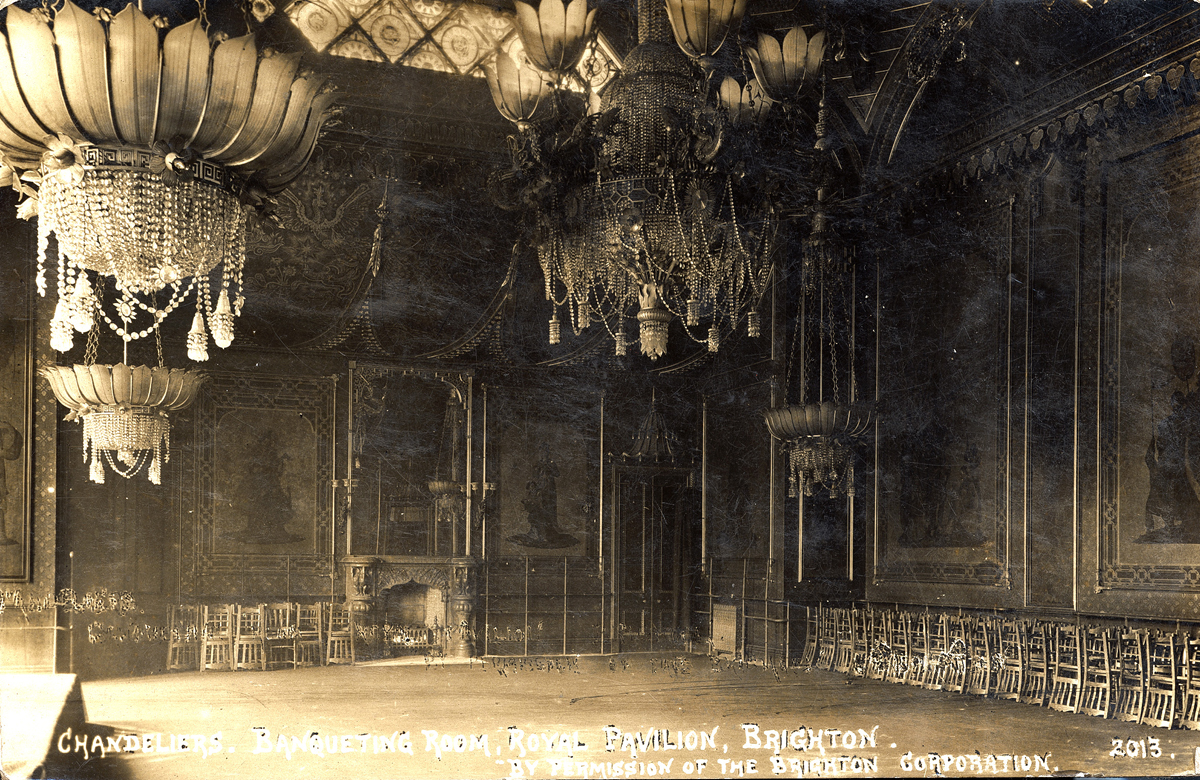
The chandelier certainly developed its own mythology. An account in The History of Brighton and Environs by Alderman Henry Martin from 1871, suggests that it was originally made as a gift for the Emperor of China. It was to be taken by Lord Amherst’s embassy to the Qianlong court in 1816. Undelivered due to the failure of the embassy, it was brought back to England and is supposed to have been hung at the Pavilion, a notion generally considered to be apocryphal. Alderman Martin’s account says:
“The large chandelier formerly in the Banqueting Room was sent, in 1816, with Lord Amherst’s embassy, as a present to his celestial majesty the Emperor of China, in the endeavour to extend the commercial relations with that monarch, and his lordship travelled a considerable distance into the interior of that vast empire to the imperial palace, but the negotiations were abruptly broken off, indignity being offered at Pekin on the 29th of August following. The embassy returned, their vessel was wrecked, but the presents were saved, and the chandelier was placed in the Pavilion by the Prince Regent’s orders.”
Several decades later local historian John G Bishop confuses matters even more. In his 1903 Guide to the Brighton Pavilion: “Tradition has it that this beautiful chandelier was in 1814 sent out with Lord Macartney’s Embassy as a present to the Emperor of China…But Messrs Perry & Co, now of Grafton Street, London, have proof that their firm supplied it in 1819-20.”
Bishop mistakes the Amherst Embassy for the Macartney Embassy (1792-94), but there is some evidence that a chandelier by Perry was indeed taken by Lord Amherst on his journey to China. Could it have been ours?
More recently, in 2012, the Dragon Chandeliers featured in crime writer Peter James’s thriller Not Dead Yet, the eighth in the popular series featuring Detective Superintendent Roy Grace. One of the villains of the story is planning to kill several famous actors by making the Dragon Chandelier collapse onto them during the filming of a crucial scene in the Banqueting Room. No spoilers, but we won’t be recreating what happens in the novel any time soon.
